Category Archives: Reef

Tap Water or RO Water, What’s the Big Deal ???
As most people have already learned, the key to any type of successful marine aquarium is to obtain the best water parameters possible and to keep these parameters stable. When referring to marine aquariums, I am speaking of both reef and FOWLR (Fish Only With Live Rock) style aquariums. The reason being is that most of the marine fish that we keep are wild caught and come from (or near) a coral reef and therefore would need the same water parameters as a reef tank if they are to thrive and remain healthy over the long term.
Just like the key to cooking a good tasting meal is to use the good quality ingredients, the key to maintaining good water quality in your marine aquarium starts by using good quality water.
Continue reading
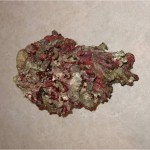
What are the benefits of live rock
When it comes to marine aquariums, you have a few choices for filtration. I prefer to use live rock for many different reasons. I have been asked many times why I prefer live rock over other types of filtration, so I thought I would take some time list the pros and cons of using live rock to help other decide if they would like to us live rock in their aquarium.
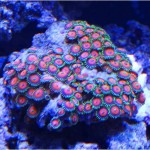
Good Corals for Beginners: Zoanthid and Palythoa
Zoanthid and Palythoa are both colonial type corals, meaning they form a colony of individual polyps all living together. They are commonly referred to as zoas and palys. As they are very similar corals, I have combined them into one article. Zoas and Palys are both very hardy soft coral placing them amount the easier to keep corals and making them a excellent choice as corals for beginners. These corals can come in some spectacular colors and color combinations, among the most amazing colors to be found in any soft coral. For these reasons, they are kept by advanced and new hobbyist alike. I have also added star polyp corals and glove polyp corals into this article as they are also colonial corals with very similar requirements and hardiness when compared to zoas and palys. The below will outline the requirements to keep these corals healthy and thriving in your tank.
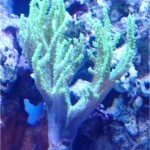
Good Corals For Beginners – Leather Corals
Leather corals are another very hardly coral making them a very good choice for people that are new to the hobby. They are readily available throughout the hobby and they can also grow to become a great looking addition to any set-up if kept in the correct conditions. These corals are very popular with both new hobbyist starting with corals for the first time, and advanced hobbyist as well making them among the most popular corals in the hobby today.
Generally speaking, leather corals are a soft skinned coral with visible polyps all over their skin. The do not have a calcified skeleton structure making them a little more tolerant of some water parameters like calcium. There are hundreds of different species of leather corals. Properly identify the exact species can sometime be very difficult as their shape can altered due to environmental factors such as temperature, salinity, light intensity and water movement to name a few. A leather can look one way in a aquarium and then (over time) look very different when placed in another tank.
Continue reading
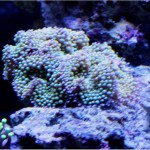
Good Corals for Beginners: Mushroom Corals
Mushroom corals like an aquarium superman rhodactis mushroom are a great choice for a beginner coral. They are a soft coral and among the hardiest of corals commonly found in the hobby today which can tolerate less than idea water conditions for short periods of time. Mushrooms can also be found in a wide verity of colors and sizes making then a very great choice to add some color to any reef aquarium. They are also readily available in most local fish stores and on-line reef stores.
There will be a few more articles posted on other easier/simpler corals to care for, so stay tune, more to come.
The below will outline the requirements to keep mushroom corals healthy and thriving in your tank.
Continue reading
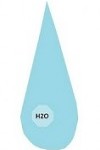
The Importance of Water Flow and Movement
In my experience, this is one of the more important factors in setting up a marine aquarium. Having good flow and water movement is key to having a great and healthy marine aquarium. Not having enough flow can lead to a variety of potential problems. I will explain why I have this opinion along with showing a few examples.

Continue reading
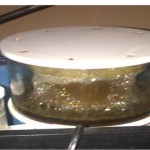
Carbon Dosing in Layman’s Terms
Carbon dosing certainly is not a new concept, but it has become more popular in recent years as hobbyist have been learning more about it and seeing some good results. It can be argued that this topic must be researched just as you would any other aspect of the hobby, but I would suggest this would require a little more detailed research as carbon dosing requires a good understand of: maintaining good water chemistry (water parameters), the factors that affect water chemistry, and how to quickly recognize changes in the appearance of your corals and/or the behavior of your fish. I would even go as far as to suggest using this article to guide your further research into this topic before deciding to start carbon dosing.
In addition, if your only goal for carbon dosing is to reduce very high levels nitrates and phosphates, then I would suggest carbon dosing may not be for you. In this instance, carbon dosing is only addressing the symptoms of high levels of nitrates and phosphates and not the causes of them. You could still have a problem with your set-up that is just not noticeable now and possible has even been complicated even more. After all, your very high nitrates and phosphates were not caused by a lack of carbon dosing.
I’ll try to explain what I have learned about carbon dosing and share some of my experiences with it. I prefer to explain things in layman’s terms as much as possible as I usually just give myself a headache when I try to correctly spell all of the scientific terms or all of the different scientific names of all the different types of bacteria.
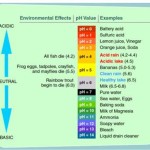
pH in Marine Aquariums
pH (Potential Hydrogen) is simply a way to measure the concentration of hydrogen ions in solution. With a PH of 7.0, water is said to be neutral, anything lower becomes acidic while anything higher is said to become alkaline (basic). The scale used to measure pH is also logarithmic due to the enormous range of hydrogen ions. Using this type of scale, you will see a increase in hydrogen ions by a factor of 10 for each 1.0 difference in the pH values. For example, when you have a PH of 6 there is 10 times as many hydrogen ions as compared to a pH of 7 and 100 times as many ions as compared to a pH of 8.0. This is a good way to illustrate the potential scope of the impact a change in pH can have.
Generally, a pH of 7.9 to 8.4 is considered to be the normal range for a average marine aquarium. I always like to keep my pH stable at a value between 8.0 and 8.3. pH is a very important element of water chemistry to understand and test for, as large and quick swings in your pH can cause stress to fish and corals even resulting in deaths in certain situations. pH is one of the aspects of water quality that can also be an indicator or symptom that something else may be off in your set-up. For that reason I do not recommended trying to adjust your pH with pH stabilizing or adjusting chemicals as you may not be fixing the potential problem(s) but only masking the symptoms. If you are having difficulty maintaining your pH, you should first try to understand the cause of the pH problems and address those causes first. That approach has always worked best for me.
The two biggest factors that commonly affect your pH are:
Coral Diseases
Background
This is a very difficult topic to learn about, as for the most part, not enough scientific study has been completed yet. Coral disease research really did not get a lot of focus until the mid 1970s with many of the common diseases only becoming properly identified in the early 1990s. With the increasing levels of pollutants in the waters of the coral reefs, combined with the effects of global warming, more and more diseases have be developing, along with the frequency they are being found in among the ocean’s coral reefs.
This is (IMO) a very serious threat to the long-term health of our coral reefs today. For example, White band disease has had a devastating impact in the coral reefs in the Florida Keys (killing ~95% of all Acropora SPS corals), and in the Caribbean (infecting ~50% of the shallow water, mostly Elkhorn SPS corals within the first five years after this disease was discovered there). During the past 10 years, the Caribbean coral reefs are being affected more and more each year. New diseases have even started to surface that affect coralline algae (Coralline Lethal Algae Disease) which could also have a significant impact on health of our coral reefs.
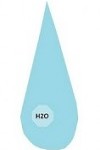
Mixing Saltwater
Mixing saltwater
Perhaps the most vital part of the marine aquarium is properly mixing salt water.
The reefs of the world are the most stable environments on Earth, despite human activity and pollution tipping that balance in the reefs of the Caribbean Sea and the east coast of Florida. The natural reef water possesses a set ratio of salts, minerals and trace elements. Temperatures vary little, and in most reefs, not at all.
Several different manufacturers product synthetic salts that posses the proper ratio of minerals and trace elements, but there are some brands that are superior to others in that respect. Seek out impartial reviews to give you an idea which salt mix to buy.
Natural Sea Water (NSW) contains 11 major elements and a handful of trace elements. To simulate that in our marine tanks one must make every effort to be as close to the natural world as possible.